Filter by
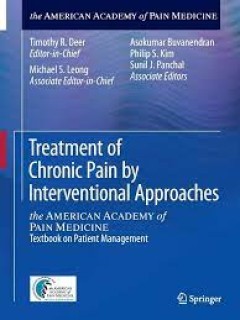
Treatment of Chronic Pain by Interventional Approaches the AMERICAN ACADEMY …
From reviews of Deer, eds., Comprehensive Treatment of Chronic Pain by Medical, Interventional, and Integrative Approaches: "Comprehensive Treatment of Chronic Pain by Medical, Interventional, and Integrative Approaches is a major textbook... [I]t should be a part of all departmental libraries and in the reference collection of pain fellows and pain practitioners. In fact, this text could …
- Edition
- -
- ISBN/ISSN
- 978-1-4939-1824-9
- Collation
- -
- Series Title
- -
- Call Number
- -

Treatment of Chronic Pain by Integrative Approaches the AMERICAN ACADEMY of …
From reviews of Deer, eds., Comprehensive Treatment of Chronic Pain by Medical, Interventional, and Integrative Approaches: "Comprehensive Treatment of Chronic Pain by Medical, Interventional, and Integrative Approaches is a major textbook... [I]t should be a part of all departmental libraries and in the reference collection of pain fellows and pain practitioners. In fact, this text could b…
- Edition
- -
- ISBN/ISSN
- 978-1-4939-1821-8
- Collation
- -
- Series Title
- -
- Call Number
- -

Treatment of Benign Prostatic Hyperplasia: Modern Alternative to Transurethra…
Treatment of Benign Prostatic Hyperplasia: Modern Techniques is an up-to-date review of modern techniques used to treat benign prostatic hyperplasia. It provides a comprehensive review of both office and operating room based techniques. Both electrosurgical and laser based techniques are covered. These include high powered 532 nm laser photoselective laser vaporization of the prostate (PVP), ho…
- Edition
- -
- ISBN/ISSN
- 978-1-4939-1587-3
- Collation
- -
- Series Title
- -
- Call Number
- -
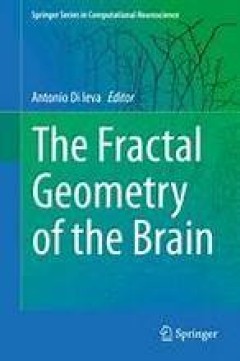
The Fractal Geometry of the Brain
Reviews the most intriguing applications of fractal analysis in neuroscience with a focus on current and future potential, limits, advantages, and disadvantages. Will bring an understanding of fractals to clinicians and researchers also if they do not have a mathematical background, and will serve as a good tool for teaching the translational applications of computational models to students and…
- Edition
- 1
- ISBN/ISSN
- 978-1-4939-3995-4
- Collation
- XXII, 585, 89 b/w illustrations, 86 illustrations in colour
- Series Title
- Springer Series in Computational Neuroscience
- Call Number
- -
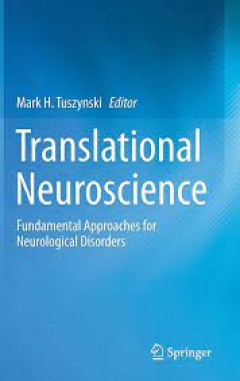
Translational Neuroscience Fundamental Approaches for Neurological Disorders
Translational Neuroscience offers a far-reaching and insightful series of perspectives on the effort to bring potentially revolutionary new classes of therapies to the clinic, thereby transforming the treatment of human nervous system disorders. Great advances in the fields of basic neuroscience, molecular biology, genomics, gene therapy, cell therapy, stem cell biology, information technology,…
- Edition
- -
- ISBN/ISSN
- 978-1-4899-7654-3
- Collation
- -
- Series Title
- -
- Call Number
- -
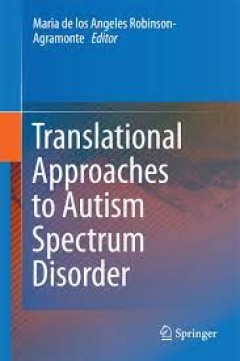
Translational Approaches to Autism Spectrum Disorder
This book addresses and synthesizes recent basic, translational, and clinical research with the goal of understanding the mechanisms behind autism spectrum disorder (ASD) and how they lead to altered brain function and behavior. Bringing clarity to these mechanisms will lead to more effective therapies for the various heterogeneous pathologies that comprise ASD. Currently there are few, if any,…
- Edition
- -
- ISBN/ISSN
- 978-3-319-16321-5
- Collation
- -
- Series Title
- -
- Call Number
- -
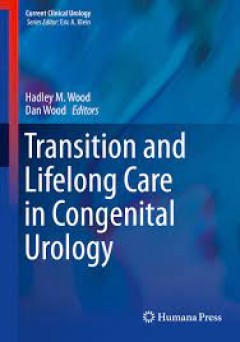
Transition and Lifelong Care in Congenital Urology
Transitional Urology is designed to fill a critical gap that exists in the published literature by comprehensively addressing the urological challenges facing adolescents and adults with complex congenital anomalies of the genitourinary system. It provides a valuable resource to pediatricians and pediatric urologists facing urological management issues beyond their expertise in their aging pat…
- Edition
- -
- ISBN/ISSN
- 978-3-319-14042-1
- Collation
- -
- Series Title
- -
- Call Number
- -
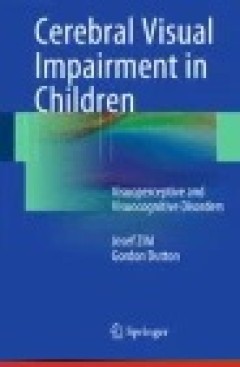
Cerebral Visual Impairment in Children : Visuoperceptive and Visuocognitive D…
Cerebral visual disorders have far-reaching consequences for child development. These have profound adverse effects on children’s education and success in school and also in later life, but, unfortunately, cerebral visual disorders often remain undiagnosed and untreated in the pediatric population. This book provides a state-of-the-art account of what is known about the development and disord…
- Edition
- -
- ISBN/ISSN
- 978-3-7091-1815-3
- Collation
- -
- Series Title
- -
- Call Number
- 616.8
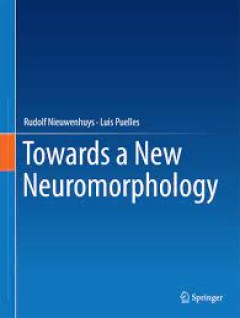
Towards a New Neuromorphology
This book demonstrates that the systematic study of gene expression patterns in embryonic and adult brains, in combination with selected data from earlier studies, can pave the way for a new neuromorphology, the most salient features of which may be summarized as follows: (1) Causal analysis of molecular patterning at neural plate and early neural tube stages has shown that the CNS is essential…
- Edition
- -
- ISBN/ISSN
- 978-3-319-25693-1
- Collation
- -
- Series Title
- -
- Call Number
- -
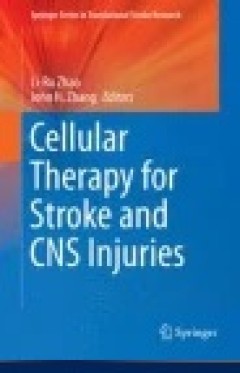
Cellular Therapy for Stroke and CNS Injuries
Cellular therapy for stroke and neural trauma has gained worldwide attention during the last decade and has shown some promising results. Various cells, including neural stem cells, bone marrow stem cells, endothelial progenitor cells, and many others have had protective or regenerative effects in animal models. The proposed book will address recent research on all relevant cell types. In addi…
- Edition
- -
- ISBN/ISSN
- 978-3-319-11481-1
- Collation
- -
- Series Title
- -
- Call Number
- 616.8
 Computer Science, Information & General Works
Computer Science, Information & General Works  Philosophy & Psychology
Philosophy & Psychology  Religion
Religion  Social Sciences
Social Sciences  Language
Language  Pure Science
Pure Science  Applied Sciences
Applied Sciences  Art & Recreation
Art & Recreation  Literature
Literature  History & Geography
History & Geography